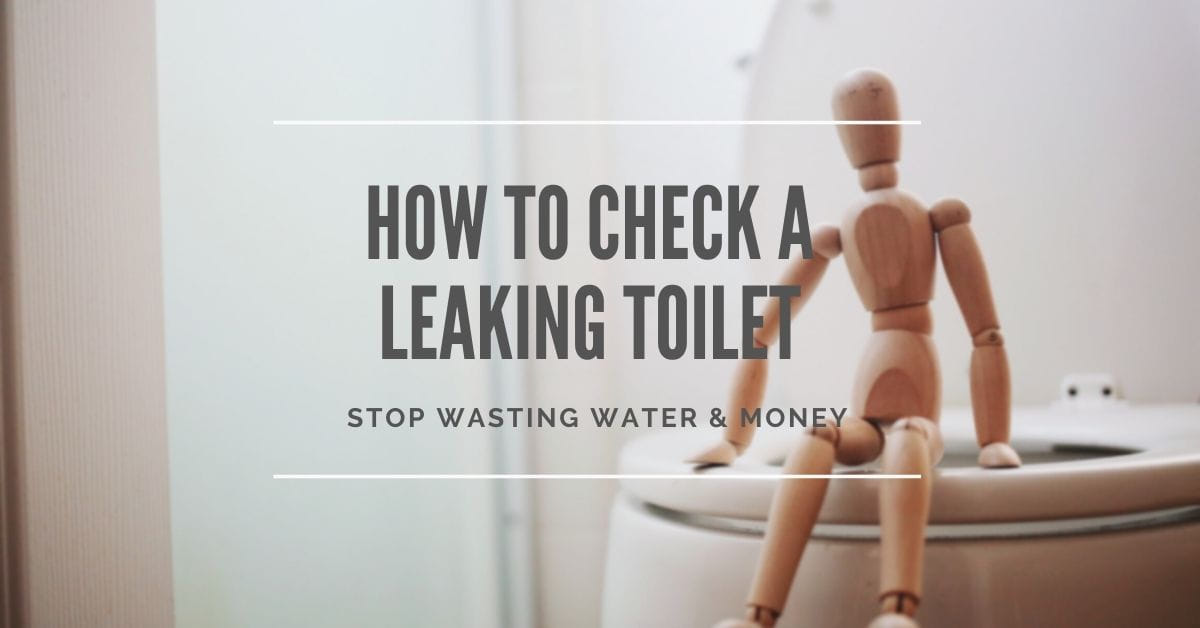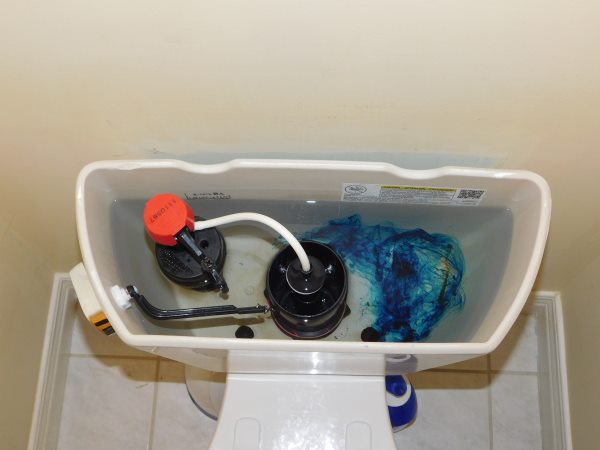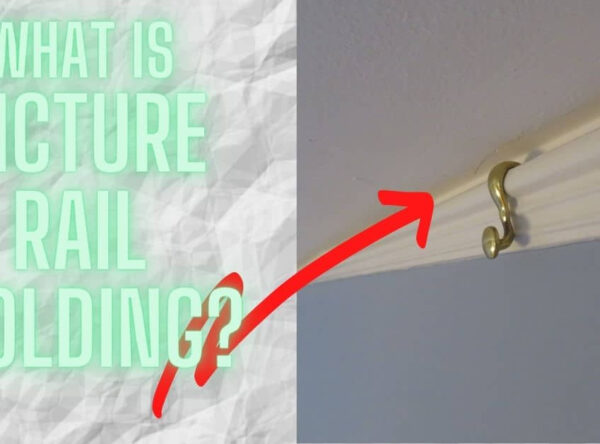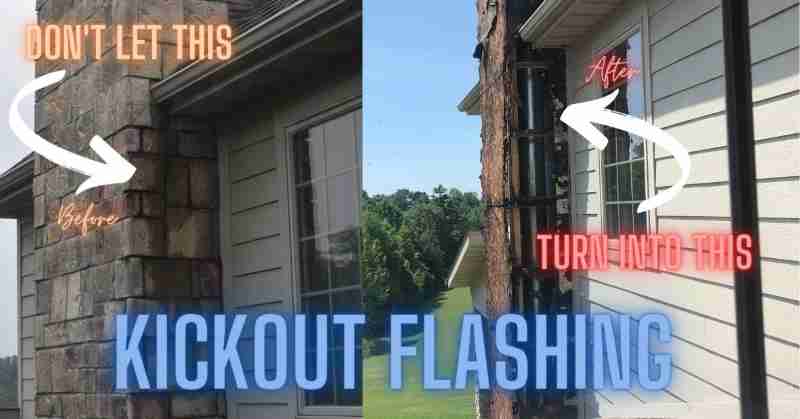How to check a leaking toilet
Do you hear that? That half a second woosh sound your toilet makes every few hours? Do you know what that is? It’s a leak in your toilet’s seal between the tank and bowl, and that is cold hard cash you’re flushing down the drain. Leaking toilets cost you money.
According to the EPA, the average house leaks or wastes about 10,000 gallons of water a year. Based on what I pay for water here in Louisville KY, that’s about $150.00 a year. Now add a couple of leaking toilets to the mix, and depending on how bad the leak is, you could easily triple that number.
A badly leaking toilet can waste about 1 gallon of water per hour. That is about 9,000 gallons a year. It could fill a swimming pool in a year. That is a lot of money you just wasted.
How to Test a Leaking Toilet?
To test your toilet for leaks, all you need is a bit of food coloring and time.
Lift the tank lid off and drop a few drops of your favorite color in the tank. No flushing at this point. We want the colored water to only be in the tank.
Now you wait. Depending on how bad your leak is will depend on how long the next steps take.
At a minimum, I’d wait a few hours. I like to do this as I’m going to bed, or heading out for the day (just in case you have a very slow leak), and you can give the water time to seep into the bowl without you having to worry about flushing.
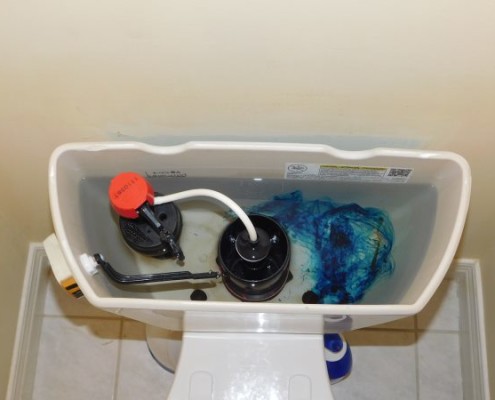
How do I know if my toilet leaking?
If, after time, your colored water has made it into the bowl of your toilet without you flushing it…you have a leak.
A perfectly sealed toilet should pass zero water from the tank to the bowl without flushing.
Once you have finished with your color test be sure and flush out ALL of the food coloring from your’s toilet’s tank. The food coloring may stain the inside of your toilet tank as they usually do not have a coating inside of them.
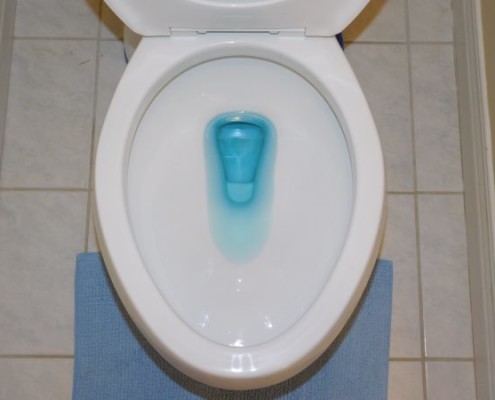
My toilet is leaking, now what?
This really depends on what toilet you have.
Most have a flapper in the center of the tank that loses its seal over time. Some of the newer ones (like the one in the upper picture) use a canister-style flush valve.
Either way, that rubber seal is typically the culprit.
If you are unsure which you have, it’s always a great idea to take a quick pic of the parts with your phone before heading out to the hardware store. It’s also a great idea to know the brand name of your toilet. Some manufacturers use specific parts.
Replacing these toilet tank seals is super easy, and shouldn’t take more than a few seconds.
After replacing the toilet tank seal, it is good to run another leak test for more food coloring to see how you did.
If you find you still have a leak between the toilets tank and bowl after replacing the flush valve seal then you likely have a leak in the main seal between the toilets tank and bowl. These rubber gaskets are held in place by pinching the two halves of your toilet together.
They are brand specific and you’ll need to take yours out to match them up.


